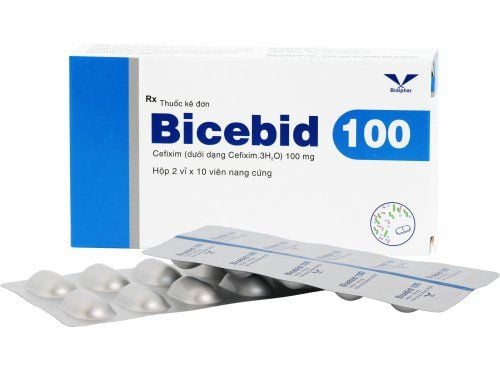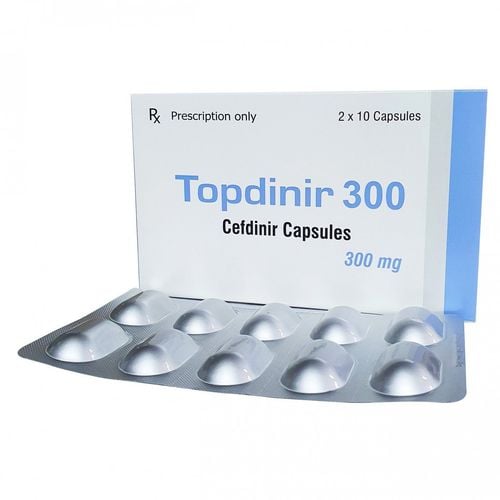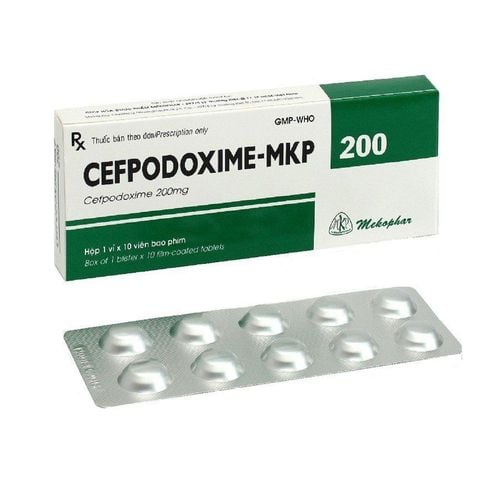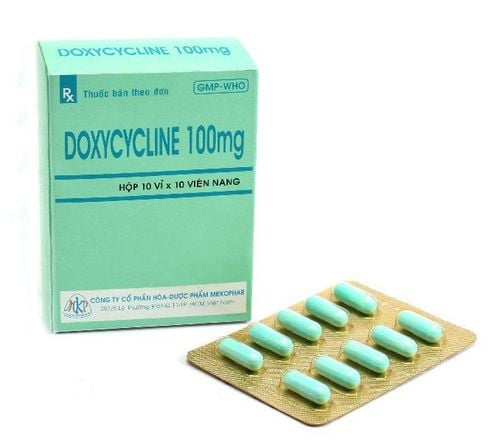This is an automatically translated article.
Oraldroxine has the active ingredient cefadroxil. This is an antibiotic-resistant drug indicated for oral administration to treat mild and moderate infections caused by bacteria that are still susceptible to this antibiotic.1. What is Oraldroxine?
Oraldroxine is available as a powder for oral suspension. Oraldroxine contains Cefadroxil 250mg or 500mg as the main ingredient. Cefadroxil is a first-generation cephalosporin antibiotic that inhibits the growth and division of bacteria by inhibiting bacterial cell wall synthesis. Cefadroxil is bactericidal against many gram-positive and some gram-negative bacteria. In which:susceptible gram-positive bacteria include Staphylococcus strains including penicillinase-secreting and non-penicillinase-producing strains, beta-hemolytic Streptococcus strains, Streptococcus pneumoniae and Streptococcus pyogenes. Gram-negative bacteria susceptible to Cefadroxil antibiotics including Escherichia coli, Klebsiella pneumoniae, Moraxella catarrhalis, Proteus mirabilis and Haemophilus influenzae are often reduced susceptibility. Note, there are now many resistant bacteria. Methicillin-resistant Staphyloccus or penicillin-resistant Streptoccus pneumoniae are resistant to cephalosporin antibiotics.
2. Uses of Oraldroxine
Oraldroxine has a bactericidal effect, so it is indicated for use in mild and moderate infections caused by susceptible bacteria such as:Urinary tract infections: nephritis, acute and chronic pyelonephritis cystitis, urethritis, and gynecological infections. Respiratory tract infections such as: tonsillitis, pharyngitis, acute and chronic bronchitis, lung abscess, pleurisy, sinusitis, laryngitis and otitis media. Skin and soft tissue infections: lymphadenitis, abscess, cellulitis, pressure ulcer, mastitis, furunculitis and erysipelas. Other infections include: Osteomyelitis and septic arthritis. Contraindications:
Oraldroxine is contraindicated in the following cases:
People with a history of allergy to Cefadroxine or to any of its ingredients. History of allergy to cephalosporin antibiotics.
3. Dosage and usage of Oraldroxine
How to use: Put the powder in the package into 1/2 cup of water, then stir well before use. Patients should take the drug with food to reduce side effects on the gastrointestinal tract.
Dosage:
For adults and children (> 40 kg):
Take 500mg - 1g / time and use 2 times / day depending on the degree of infection. For children (< 40 kg):
Under 1 year old: Take 25-50 mg/kg body weight/ 24 hours, divide the dose into 2-3 times. From 1 to 6 years old: Take 250mg, 2 times a day. Over 6 years: Take 500 mg, 2 times daily. Elderly: Check renal function before use and dose adjustment is required as in patients with renal impairment.
People with kidney failure: Can start taking from 500 to 1000 mg. The next dose can be adjusted according to creatinine clearance (ClCr) as follows:
Creatinine clearance (ClCr) less than 10 ml/min: Dose 500 - 1000 mg every 36 hours. Creatinine clearance is 11-25 ml/min orally at a dose of 500-1000 mg every 24 hours. Creatinine clearance from 26 to 50 ml/min: The dose is 500-1000 mg every 12 hours. The duration of drug treatment must be maintained for at least 5 to 10 days.
Overdose and missed dose:
Overdose: Oraldroxine overdose symptoms mostly cause only nausea, vomiting and diarrhea. In addition, neuromuscular hypersensitivity may occur, causing convulsions, especially overdosage is more common in patients with renal failure. Treatment requires taking the patient to a medical facility. Treatment requires respiratory protection for the patient, ventilation and intravenous fluids. Thereafter, mainly supportive treatment or symptomatic resolution after gastric and intestinal lavage. Missed dose: If you forget to take a dose of Cephadroxine, take it as soon as you remember. However, if it is almost time for your next dose, skip the missed dose and take your next dose at the scheduled time. Try not to forget the dose, as it affects the effectiveness of the antibiotic.
4. Oraldroxine side effects
When using Oraldroxine you may experience unwanted effects, including:
Common: Nausea, vomiting, abdominal pain and diarrhea. Uncommon: Pruritus, eosinophilia, maculopapular rash, rash, urticaria, pruritus, reversible transaminase elevations, testicular pain, vaginitis, fungal growth causing candidiasis and pruritus genitals. Rare: Anaphylaxis, serum sickness, fever, neutropenia, thrombocytopenia, hemolytic anemia, positive Coombs' test, pseudomembranous colitis, gastrointestinal disturbances, erythema polymorphism , Stevens-Johnson syndrome, common pemphigus, toxic epidermal necrolysis (Lyell's syndrome), jaundice, cholestasis, mild elevation of AST(GOT), ALT(GPT), hepatitis, angioedema, infection Nephrotoxicity with transient increases in blood urea and creatinine, reversible interstitial nephritis, convulsions, headache, agitation and possibly arthralgia. When experiencing side effects of Oaldroxime, the patient should stop using it and notify the doctor or go to the nearest medical facility for timely treatment.
5. Notes of Oraldroxine
Note:
It is necessary to inform the doctor before taking Oaldroxime about the history of allergies, especially patients with a history of allergy to penicillin because cross-hypersensitivity reactions have been observed. Use Oaldroxime exactly as prescribed by your doctor, do not arbitrarily change the dose or time of taking the drug. When symptoms are gone, enough time is still needed to avoid re-infection. When using Oaldroxime for people with impaired kidney function, the elderly, infants, and premature babies, it is necessary to be very careful. Oaldroxime, when used for a long time, may cause overgrowth of non-susceptible bacteria. Cause pseudomembranous colitis, should monitor signs such as prolonged diarrhea to detect early and be cautious with patients with a history of gastrointestinal allergies, especially inflammatory bowel disease. Use in pregnancy: Although no adverse effects have been reported to the fetus to date, the safe use of cephalosporin antibiotics during pregnancy has not been definitively established. This medicine should be used during pregnancy only if clearly needed. Lactation: Oaldroxime is excreted in breast milk at low concentrations, has no effect on nursing infants, but may in some cases cause gastrointestinal disturbances. diarrhea and rash. Drug Interactions:
Cholestyramine binds to Oaldroxime in the intestine thereby slowing its absorption. Probenecid when used concurrently with Oaldroxime has the effect of reducing cephalosporin excretion. Increased drug toxicity: Furosemide and aminoglycosides may synergistically increase nephrotoxicity. Storage:
Store Oaldroxime in a dry place, at a temperature not exceeding 30°C, away from direct light. Keep out of reach of CHILDREN.
In short, Oraldroxine is an antibiotic, so it should only be used for bacterial infections and under the direction of a doctor. You should not self-medicate because of the increased risk of drug resistance and development of non-susceptible organisms.
Please dial HOTLINE for more information or register for an appointment HERE. Download MyVinmec app to make appointments faster and to manage your bookings easily.













